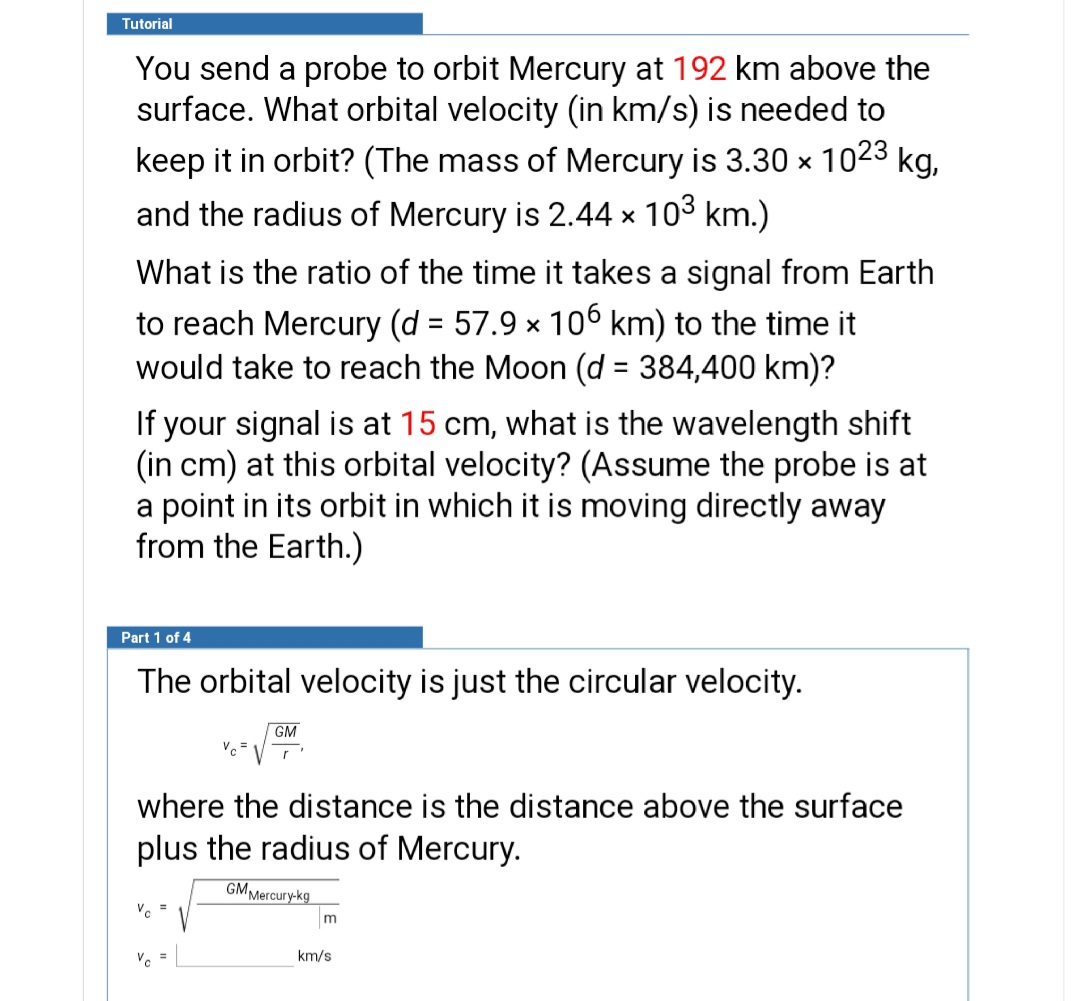You send a probe to orbit Mercury at 192 km above the surface. What orbital velocity (in km/s) is needed to keep it in orbit? (The mass of Mercury is 3.30 x 1023 kg, and the radius of Mercury is 2.44 × 103 km.)
You send a probe to orbit Mercury at 192 km above the surface. What orbital velocity (in km/s) is needed to keep it in orbit? (The mass of Mercury is 3.30 x 1023 kg, and the radius of Mercury is 2.44 × 103 km.)
Related questions
Question
100%

Transcribed Image Text:Tutorial
You send a probe to orbit Mercury at 192 km above the
surface. What orbital velocity (in km/s) is needed to
keep it in orbit? (The mass of Mercury is 3.30 x 1023 kg,
and the radius of Mercury is 2.44 × 103 km.)
What is the ratio of the time it takes a signal from Earth
to reach Mercury (d = 57.9 × 106 km) to the time it
would take to reach the Moon (d = 384,400 km)?
%3D
If your signal is at 15 cm, what is the wavelength shift
(in cm) at this orbital velocity? (Assume the probe is at
a point in its orbit in which it is moving directly away
from the Earth.)
Part 1 of 4
The orbital velocity is just the circular velocity.
GM
where the distance is the distance above the surface
plus the radius of Mercury.
GM Mercury-kg
Ve =
m
V. =
km/s
Expert Solution
This question has been solved!
Explore an expertly crafted, step-by-step solution for a thorough understanding of key concepts.
This is a popular solution!
Trending now
This is a popular solution!
Step by step
Solved in 2 steps with 1 images
